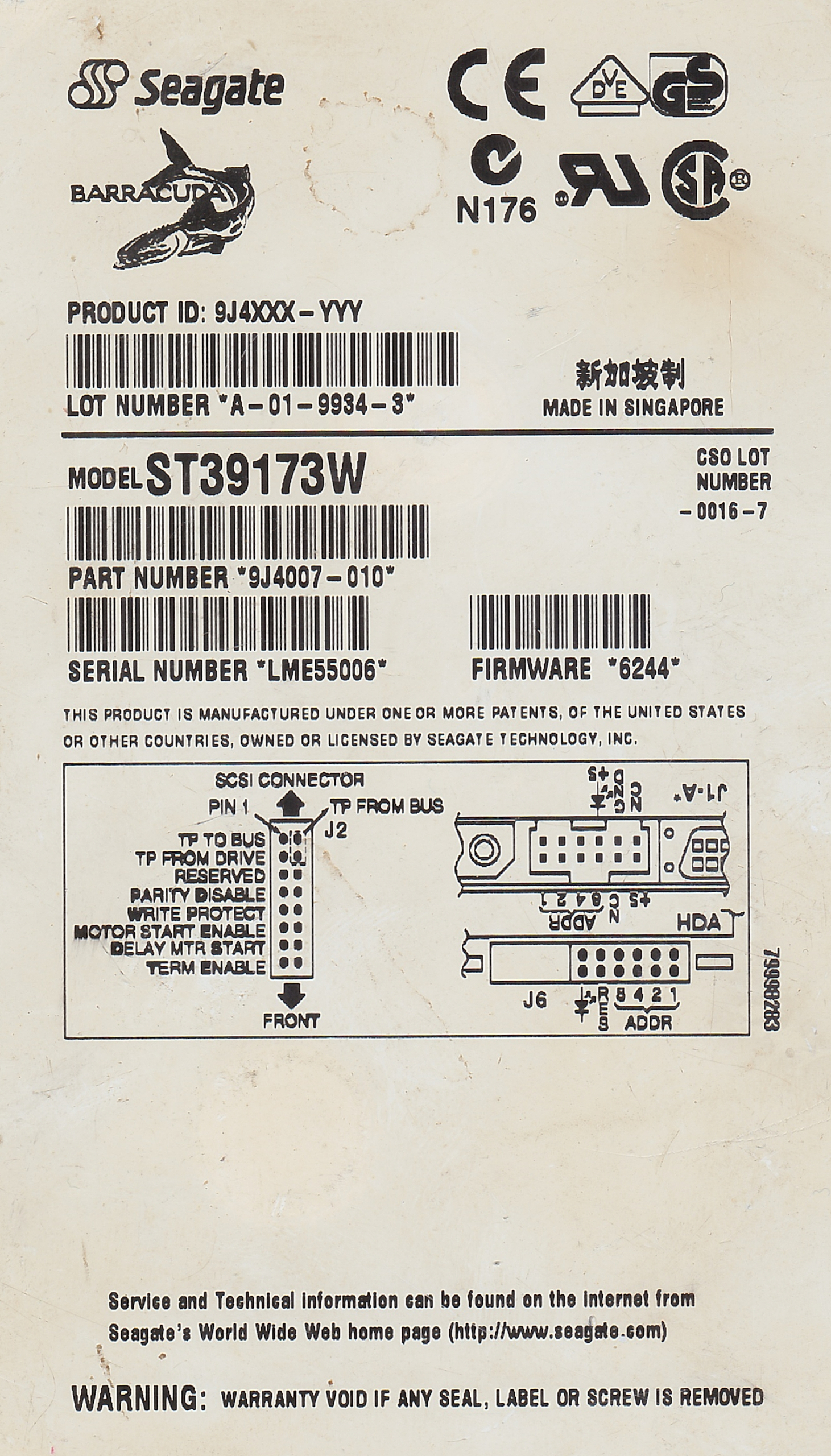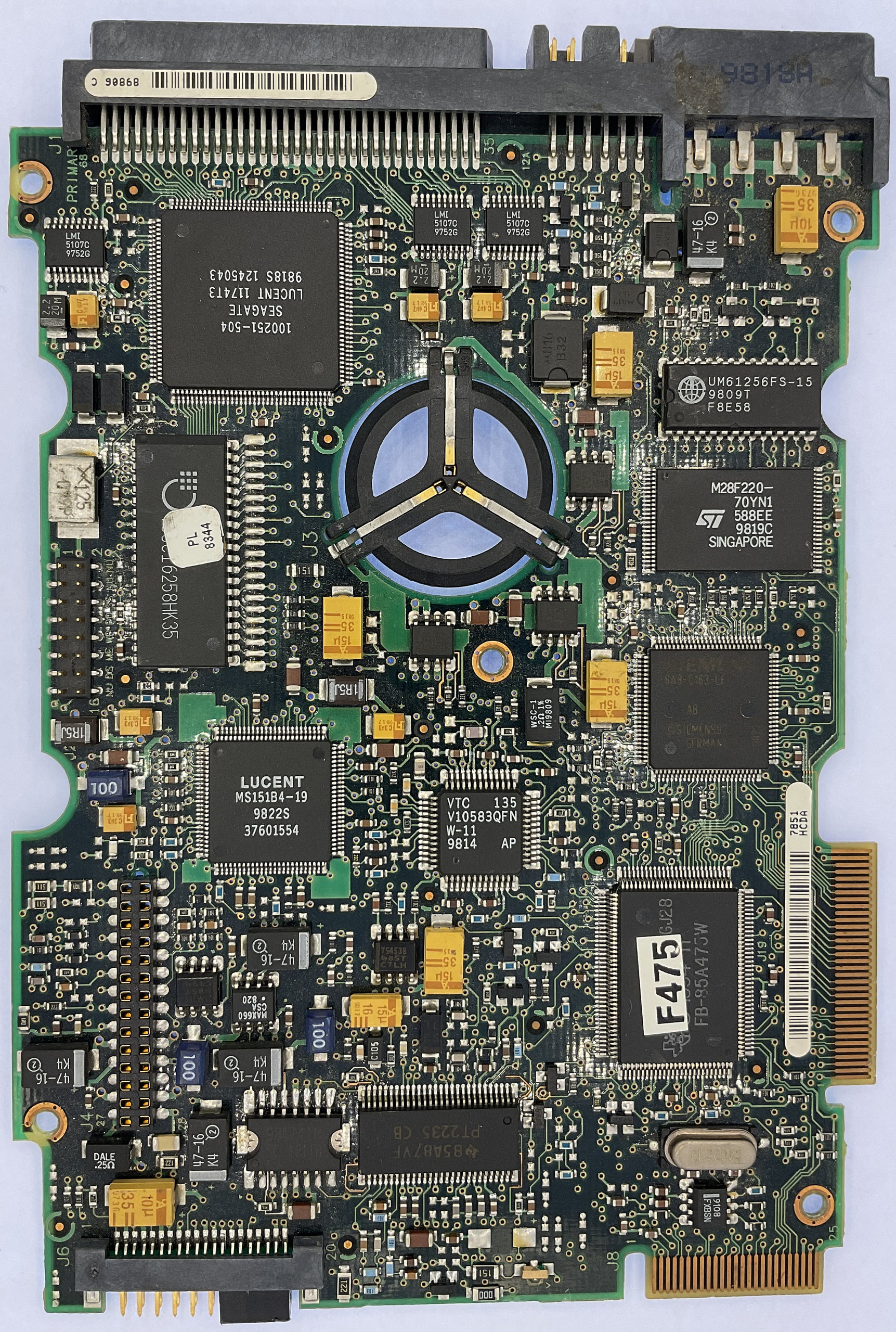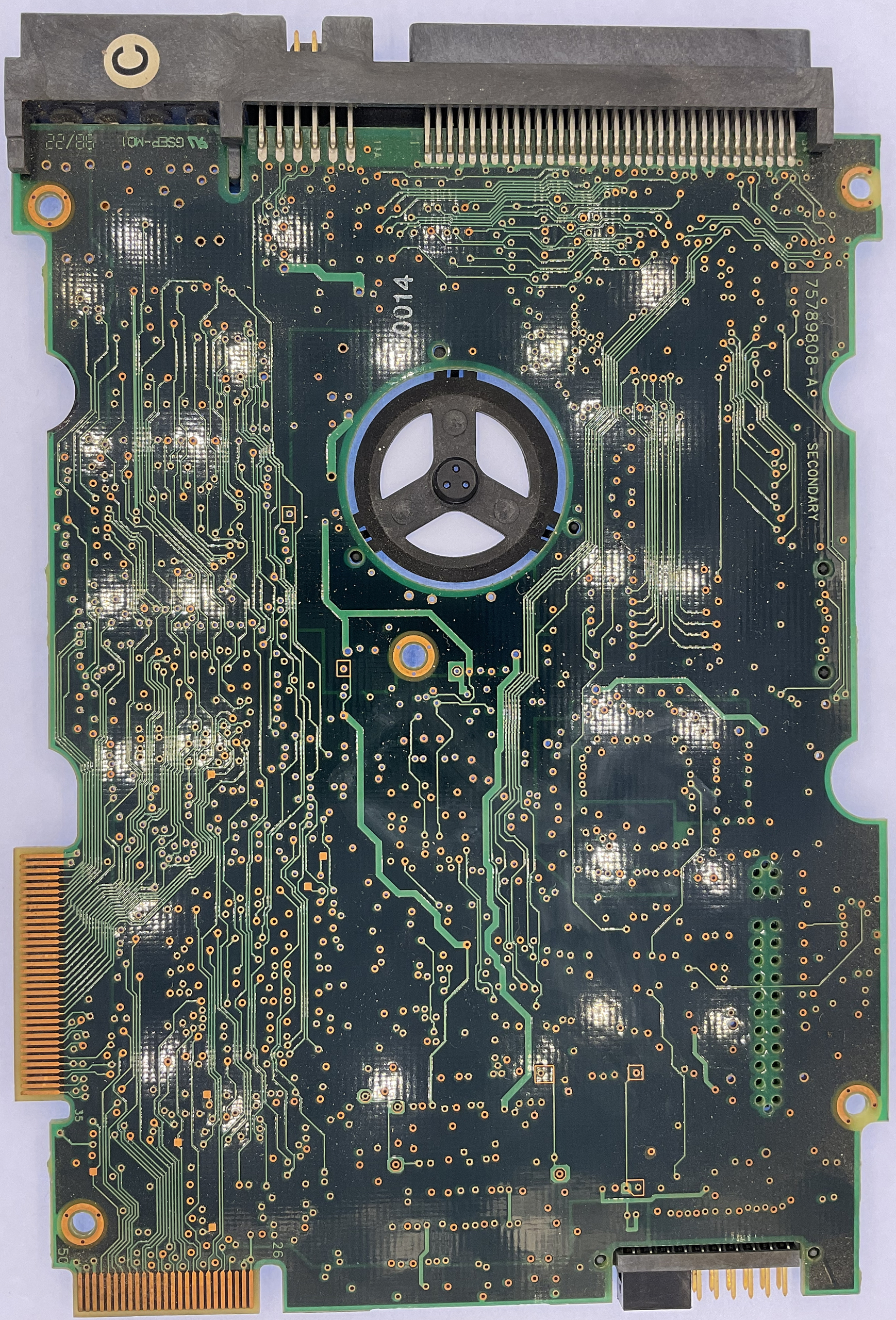The Barracuda 9LP family topped out with this stunner of a model: the ST39172W. Aside from the fairly forgettable model number, this drive is a strikingly impressive unit. Featuring five-platters, running at 7,200 RPM and making enough noise to make your ears bleed, describing this thing as anything but beastly may be a travesty.
While Barracuda isn’t currently the high-end name it once was, this unit decides to show the other side of the story.

Drive Attributes ------------------------------------- Seagate Barracuda 9LP ST39173W ------------------------------------- Capacity 9.1GB Mfc Date 2000-04-23 Format 3.5" Interface SCSI Platters 5 Heads 10 Cache 512KB RPM 7200 Origin Singapore (ST) -------------------------------------
The ST39173 features the full 5-platter, 10-head configuration. The lower-end ST34573’s held a 3-platter, 5-head configuration.
Being from the period, 7,200 RPM wasn’t as commonplace as it is today. Perhaps it was for the best, given the tone of a high-speed ball-bearing motor.

Seagate’s date code format was a little bit different on these units, stating 0016-7, equating to the 23rd of April 2000 (week 16, day 7, 2000).
Something to praise about Seagate is their excellent jumper settings labelling, making the Barracuda 9LP’s an absolute joy to work with. Hitachi could have learnt a lesson or two.



The spindle motor connection method is perhaps a little unusual to those unfamiliar with SCSI units of this period, but it is an extremely space-efficient design. Below is another image which helps to show how it actually connects. No wires to be seen!

The underside of the drive isn’t very exciting, with the usual head-connection pin block and some hidden screws.

The microcontroller & interface adapter are both custom Lucent Technologies chips. This drive features 512KB of cache, which is provided by Mosel Vitelec. Other chips provide auxiliary functions, alongside the usual LED found on SCSI drives to the south of the PCB.
Fortunately, given Seagate’s excellent jumper labelling above, no space is wasted with cryptic silkscreen notation.

Clearly, the PCB is from week 14, 2000. It’s a couple weeks older than the drive chassis, which is perfectly logical.

There’s surprisingly little information about these drives on the web when concerning historical or price data. By 2000, there were obviously models starting to out-pace these from Seagate themselves, but the Barracuda 9LP series as a whole certainly had their place. Provided that some of these clearly held up for quite a long service life, they definitely shouldn’t be classed as poor design.
Certainly, if you ever come across one of these in-operation somehow in the current day, you’ll definitely be able to hear it from a mile away!
Seagate Barracuda 9LP Family Product Manual (.pdf, opens in new tab)
If you missed the video I made on this drive, you can find it here: